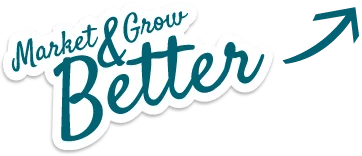
Create a Keyword Strategy for Your Lansing Business
If you have a website, you should have an internet strategy. The next eight blogs from InVerve will focus on the eight things you should do to build a strategy. If you take a half hour to lay these ideas into your marketing plan, you will be well on your way to putting those building blocks in place.
The first thing you should do for your business is have a keyword strategy. You need this in order to help people who are interested in your product or service to find you. Identify a minimum of five keywords. The key to strong keywords is in understanding your customer and what they care about.
For example, if you want people to rent your motor coach buses, think about what a customer will be searching when they are searching. You will want keyword phrases like “party bus” or “rent a bus”. People that rent a motor coach will not search with the word “coach”, they will search with the word “bus”.
From there you will narrow the word list based on difficulty, or, how much competition is there for the words on your list. The best free tool to help with this the Google Keyword Tool. The word “coach” might be used if it proves to be a less competitive word to rank with.
Once you choose your words, your site should reflect these words. Your headlines, pages, and content should all be centered on the key words.
Use long-tail search terms such as:
- bus rental michigan
- party bus rental Detroit to Chicago
- corporate bus rental Detroit
It sounds simple when you apply it. However, it can be tricky with your own business. We are entrenched in the language of our own industry and it can be hard to remember how other people might characterize a search for us.
Optimize Your Site
Site optimization, also referred to as search engine optimization (SEO), is akin to improving your location. If more people can find you, more people will do business with you. And, of course people find you in search engines. So, it’s worth getting a higher list ranking.
The vast majority find you with Google. Google changed things in a major way in April of 2012 with the new Penguin algorithm. This new algorithm gave higher scores to sites where users found relevant information. So, it’s not just about how much content that you have on your site, it’s about how your traffic interacts with it.
In many ways, Google has leveled the playing field for marketers that truly want to present a relevant and content rich experience for users. They now downgrade sites that use keyword stuffing, cloaking, and duplicate content.
The two things you should be focusing on:
- On-page SEO – happens on each of the pages of your site. It’s easy to gain immediate improvement here because you control your content. What this means is how well your content is presented for search engines. This is done with things like page titles, meta descriptions, headings, cascading style sheets, images, MOZ Rank, Google Crawl date, and URL structure. See the Essential Step-by-step Guide to Internet Marketing for more detail.
- Off-page SEO – this is called authority and it will take time to develop. It’s what other sites think about your site. When other sites link to your site, your site has more authority. And, when sites with higher authority link to your site, you gain again.
Create Content
The anchor of your site plan, now that content is king, is your blog. It’s the first thing you should commit to. And, it’s much easier than you think. You have robust knowledge about your business category – share it.
Think about like it this:
- The biggest problems you solve
- The questions that your customers ask
- The trends you are seeing
Make a list of blogs that you could write based on that list, at least four per item. Then, write two paragraphs about each item on your list. You will have three months of blogs in the hopper to publish.
If you really want to make blogging work for you, consider a blogging platform. We most often recommend Hubspot, Drupal, and WordPress. They offer a content management system to easily update your site and your blog.
Other content you should be considering are pieces that help connect with your customers. I like to present spreadsheets with my peer groups. But you may find some of these more to your liking:
- White papers about your industry, usually containing fact and stats
- E-books that explain complicated topics
- Guides that show your customers how to do or attain something
- Kits that combine pieces of content for a more comprehensive perspective
- Checklists to help your customer get organized
- Organizational tools like spreadsheets
- Videos
- Presentation deck download
- Infographics
Here is the best news on content - one piece of content can become four. For example, a white paper can be broken into its chapters and become multiple blogs. The script for your video can become an e-book and six tweets. Your white paper, video, and checklist can be combined to create a kit.
People will remember you if you give them something that makes life easier. And, having pieces that are branded with your logo and contact information could nurture that connection to an eventual business transaction. And, isn’t that why we have website? Go forth and create content.
Why Promote Your Content
I remember having a boss about ten years ago that said “his computer is the most expensive deck of cards he ever bought”. He simply would not use his computer or email. Now of course, he has come to depend on it.
Fast forward ten years and my college aged kids are telling me that email is too slow. So, I have to figure out insta-grams and snap-chat (I don’t even know how to spell them!).
The point is, we don’t know what platforms we will be using in a year or two. But, we had better get on board. And, get your content on board too. Create it and then push it everywhere. Housing engaging content on your website helps you with search engine optimization. When someone links to your content, it improves your authority score – again helpful in SEO. Social media platforms can be aggregated to make your content easy to share, so, use it. We use Hubspot, but you can choose from many reliable options.
Here are some excellent statistics from Hubspot that analyzed data from more than 4,000 businesses, both b2c (business to consumer) and b2b (business to business).
- Businesses who blogged 16-20 times a month got 3x more leads t han those who did not. Lead generation starts at as little a blogging 5x a month
- 200 or more blog articles on a business site generated 3.5x more leads than with those with under 20 posts on their site. The curve here rockets upward at above 100 blog posts.
- Business sites with 400-1,000 pages generated 6x more leads. If you use a content management system like drupal, Joomla, WordPress or Hubspot, each article/entry counts as one 'page' of the site!
There you have four pieces of developing an Internet strategy for your business: create a keyword strategy, optimize your website, create content, and promote it.
Topics: marketing






